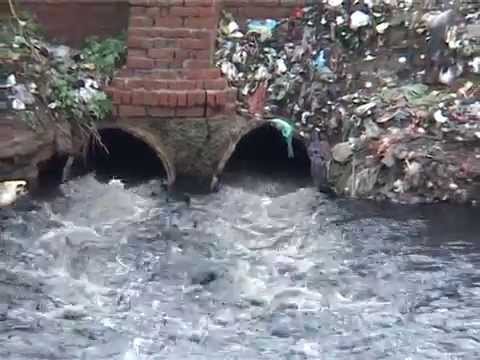Aditya Vaibhav | The TrickyScribe: India Meteorological Department on Monday predicted heavy to very heavy rains at isolated places very likely over Uttarakhand and Odisha besides heavy rains at isolated places over Assam, Bihar, Chandigarh, Delhi, Gangetic West Bengal, Himachal Pradesh, Haryana, Jharkhand, Meghalaya, Nagaland, Manipur, Mizoram, Tripura and Uttar Pradesh.
While torrential rains coupled with waterlogging bring cities to grinding halt through erratic power supply and traffic snarls, the threat is of a greater magnitude. Indian urban local bodies still struggle to cope with the annual monsoon deluge, drawing criticism about its poor planning.
Non-biodegradable wastes including the plastics do their bit by clogging the already ailing drainage systems blocking the chances, albeit minimal, of getting the effluents treated on their way to rivers and other water bodies. Water finds its own level. They say!
Deteriorating Water Quality
Impaired ecosystems affect both the quantity as well as the quality of water available for human consumption. More than two billion people have no access to safe drinking water at home affecting their health, education and livelihoods adversely.
Water quality in majority of rivers has been found to be polluted due to wastewater released from drainage systems in the urban areas. Pollution levels are alarmingly above the red mark in most of the places. Sewage is one of the main pollutants of water.
READ MORE: Even Familiar Bird Species Now In Danger
Absence of Fool-proof Sewage Treatment Mechanisms
Most of the sewage receives almost no treatment before being discharged into the rivers as far as most of the developing countries are concerned. The said effluents contain heavy metals including cadmium, chromium, lead, mercury and zinc. Besides, the sewage effluents also contain harmful bacteria and viruses which contaminate the river water. While drinking this contaminated water, people suffer from serious ailments.
READ MORE: Environment & Culture: Aspects of the Same Coin
Want of Clean Drinking Water
With rapid expansion of cities and domestic water supply, the quantity of wastewater is increasing. More than three-quarters of all the wastewater from our homes, cities, industry and agriculture flows back to nature and pollutes the environment.
A majority of the underprivileged population still depends on open water bodies including rivers, streams and ponds as the source of drinking water. Natural drinking water sources are getting polluted due to a number of environmental and ecological factors. It has often been reported that water-borne diseases are a major cause of poor health of women and children.
Wastewater from health-care establishments
Effluents from health-care establishments, according to a WHO report on collection and disposal of wastewater, is of a similar quality to urban wastewater, but may also contain various potentially hazardous components including microbiological pathogens, hazardous chemicals, pharmaceuticals, radioactive isotopes and the hazards associated.
Hospital wastewater (HWW) contains potentially hazardous substances such as pharmaceutical residues, hazardous chemical s, pathogens and radioisotopes. It is due to the presence of these constituents, the HWW can represent a chemical, biological and physical risk for public and environmental health.
Studies demonstrate that the prime impacts of these substances are not neutralized by wastewater treatment plants. These substances can be found in a wide spectrum of concentrations depending upon the size of a hospital, the bed density, number of inpatients and outpatients, the number and the type of wards, the number and types of services, the country and the season.
Issues that have cropped up in the last decade are related to substances and microorganisms that don’t have a regulatory status, such as antibiotic residues, drugs and specific pathogens.
Presence of Antibiotics in Hospital Effluents
A Patna University (PU) research team led by Vyomesh Vibhaw found antibiotic resistant bacteria in hospital effluents. The study has provided documented evidence that antibiotics also enter water bodies through HWW. This might pose a greater threat in India due to the potential scarcity of resources for the treatment of wastewaters. In India, for example, not much wastewater undergoes any type of treatment and along with other pollutants; antibiotics must also be finding their way into recipient waters like rivers, lakes, reservoirs, etc.
In situations where the wastewater is not subjected to any treatment, it is also argued that antibiotics are diluted in the recipient waters in comparison with therapeutic concentrations and may not cause any harm. It, however, is widely accepted that exposure to sub-therapeutic concentrations over long periods of time provides suitable conditions for the transfer of resistance genes.
The PU study highlights the fact that hospital effluents are a major source of antibiotic resistance against many broad-spectrum antibiotics. The fact that antibiotic resistance was found to be present in drains carrying water discharge from the hospitals present a worrisome trend demanding a detailed investigation and effective planning.
Total Views: 2,75,520


